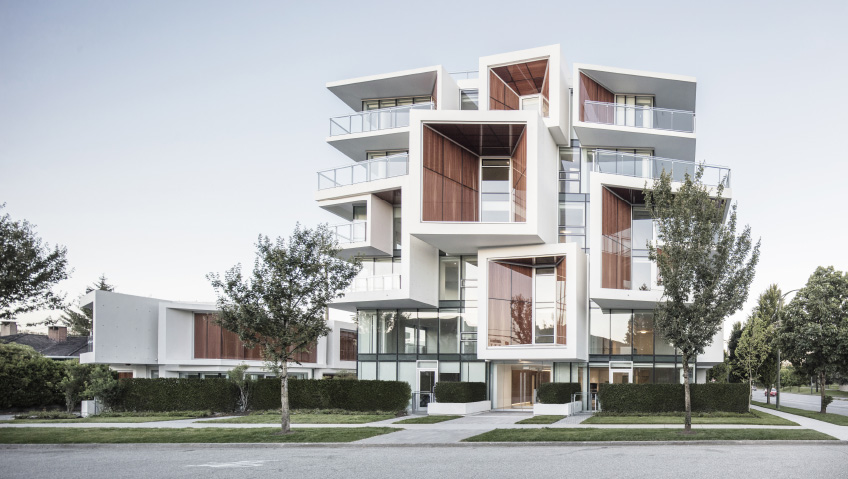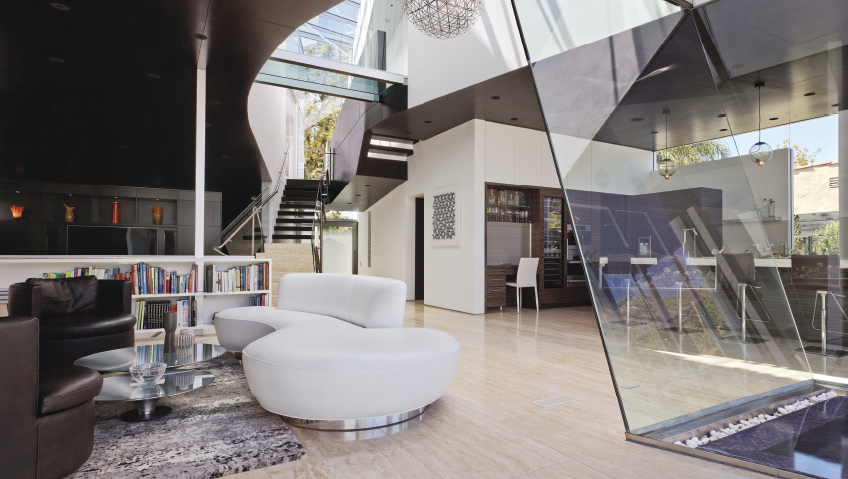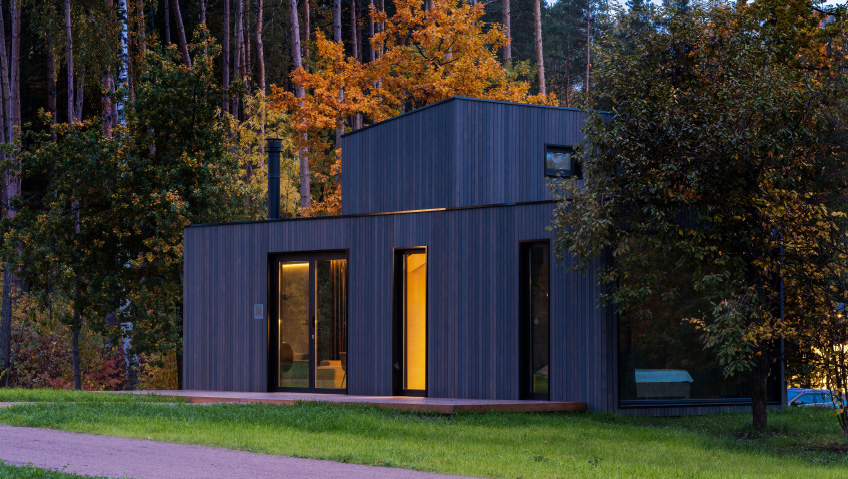“We’re very much about being sensitive to place, nature, the climate, and cultural context we’re working in,” says Arno Matis, Principal, Arno Matis Architecture.
Named as one of the top 40 leading international design firms of the 21st century for two years running by World Architecture News, Arno Matis Architecture (AMA) has more than 29 years of experience in mid-to-large-scale rezoning and development, specializing in densifying coastal communities with contemporary spaces that relate to nature. The company aims to provide responsive, sustainable design solutions that address the present while embracing a timelessness in their aesthetic.
For Matis, spending considerable time and effort on ensuring projects fit into their overall context is vital.
“From sitting on the site to considering the perspective of people walking around the edges—how the scale of the buildings are, how they feel, how approachable the buildings are, and how the buildings melt into the landscape—it’s all part of the process,” he says. “We work a lot on the integration of landscape into the building, so they fit nicely and almost feel like they belong, in a way.”
Over the years, Arno Matis has created award-winning architectural projects both domestically and abroad, and has actively created and overseen many award-winning landmark buildings, such as the Sunset Community Centre in Vancouver and Arena Stage in Washington, while serving as a Senior Director of Bing Thom Architects (BTA). Matis also oversaw Hotel Georgia’s first rezoning in accordance with Vancouver’s Tall Building Policy while working for BTA.
Operating under the maxim of design being the creative and proactive process of utilizing materials and resources to the fullest extent possible for the benefit of people, AMA’s specialty is utilizing urban design to create architecture that increases density, efficiency, sustainability, and livability while maximizing value. The company also uses the most potent tools available to aid the design process, from the simplest hand sketch to the most complex BIM, AR/VR, and AI software combined with 3D printing.
“I’ve had some great mentors,” says Matis of Bing Thom who worked for Arthur Erickson, a famous West Coast modern architect. “Bing took that West Coast modern tradition, and we developed it in the direction that he took it in his time. We are aspiring to carry on in that tradition.”
Starting at four or five people, AMA grew to about 10 before 2009 when the “world imploded,” says Matis. “I think everyone remembers when everything came to a grinding halt. Within a period of several weeks, almost every project we had went on full hold and we had to get creative about how to survive through a pretty bad recession.”
As a result, Matis realized it was a good time to start building. “We started a design and construction company, did three homes, and received lot of press for one of them, which got quite a bit of exposure,” he explains. “As we came out of the recession, the phone started ringing again for larger projects, and we had to make a decision—whether that was putting more time into consulting or continuing with the construction side.”
Ultimately, Matis decided to drop construction in favour of scaling up the design side of the business. Since then, work has been primarily based in B.C.’s Lower Mainland in a number of municipalities including Richmond, Vancouver, and Coquitlam with inquiries for Surrey. Now the company is also looking at potentially doing some work in Washington, Texas, and California.
“We’ve expanded outward from Vancouver, but Vancouver is still our home. That’s where our head office is, and still where we do a lot of our work.”
Notable projects are found in the mid-rise format, with the company cutting its teeth on that middle ground. “When you get into a mid-rise-scale project, it has all of the complexity of a tall building with consulting, structural, and mechanical issues being very similar on a mid-rise building,” Matis says. “A lot of smaller firms probably wouldn’t be able to do that, and bigger firms struggle to wrap their head around whether it’s worth going after that scale of work or not. But we ended up landing in that middle-scale type of project, and because there wasn’t a lot of it around, we started to experiment a bit more with possibilities.”
This includes 2211 Cambie Street in Vancouver, a “very difficult and challenging site” to try to shoehorn a mid-rise project into. “It was highly visible and got a lot of attention early on, and helped launch us,” says Matis. “It probably represents a lot of our thinking around the possibility of mid-scale projects to add excitement and interest to a city without having to be large-scale and dominating on the skyline.”
Another notable project, Aperture, is a bigger but still mid-rise project in a residential suburban area, where the company was tasked with fitting higher density into a largely single-family neighbourhood, embracing the idea of ‘gentle density.’
“There can be a lot of pushback from neighbourhoods about adding this extra density, but cities like Vancouver wanted to do it because these areas where these projects needed to be built were near transit,” shares Matis.
These mid-rise projects were often built close to rapid transit station sites or future station sites, he adds. Even though they were high-density, they were interesting buildings and of high quality, with landscaping and a mindful approach to how the buildings fit; thus folks in the neighbourhood didn’t push back.
“We typically encountered little to no resistance,” says Matis. “Because we had so much success doing these types of projects, we got many more of them. We still do a lot of them, but we’ve since moved on while using the same kind of approach we picked up and learned there.”
Along with design and innovation, AMA prioritizes public service and volunteerism, which was impressed upon Matis by his former boss and mentor Bing Thom. “He was always serving on boards and committees and volunteering his time. When I started my firm, I immediately volunteered for the City of Vancouver Planning Commission, which I sat on for a few years, and then became board member on the Urban Design Panel, where I sat for quite a few years,” says Matis. “That turned to be quite invaluable, because I not only learned a lot about how the planning departments form policy, but I got to know a lot of the planners, which was especially valuable when we started to do a lot of rezoning projects.”
With this volunteer work, Matis developed a deep understanding of the rezoning and permitting process. “We really pay attention to the details of policy and try to do our best to incorporate the wishes of the public, councillors, and planning departments when we’re going through with our application,” Matis says. “I find that added attention to detail can really make a dramatic difference in the reception of a project.”
AMA projects typically pass through public hearings with unanimous decisions, says Matis. “There’s nothing worse than fighting your way through an approvals process where you know you’re getting through by the skin of your teeth,” he adds. “You get through, but you’ve now got a neighbourhood where, even before a shovel hits the ground, they’re already upset about this project that’s coming. And when it’s completed, it’s the sum of all fears.”
The project is then sitting there for the next 50 years, and everyone needs to look at it and drive past it, he says.
“Bing always used to say, he never wants to do buildings where he didn’t feel proud driving past that building years later or [felt the need] to avoid that particular street in the city because the building turning out so badly. I never want to have to drive down a street where I have a project I worked on that I’ve been ashamed of; I always want to be proud to drive by, and I want the neighbourhood to be proud of those buildings as well. That’s the approach we’ve taken, and I think it’s served us well.”
Looking ahead, AMA is interested in expanding across Canada and the United States, as well as remaining open to new opportunities. “Because we’re doing larger projects these days, it makes sense to look at projects in other areas,” says Matis. “We’re also doing a considerable amount of R&D in the use of technology in not only design, but construction and the management of those projects.”
This includes some “pretty interesting, cutting-edge” research and development in applying technology specifically to improving the affordability of housing. “That’s an interesting area where we’re applying a lot of our energy and effort.”
Until then, AMA and Matis are committed to creating beautiful and unique designs that work organically in every locale while exceeding clients’ expectations.






